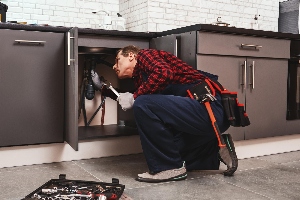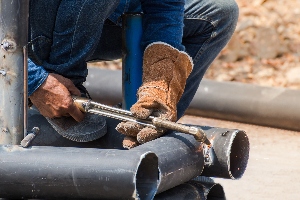Regular drain inspections are a crucial component of property maintenance that you may overlook. These inspections help you to identify potential issues before they escalate, saving time and money on unexpected repairs. When you make it a habit to check your drainage system regularly, you also ensure the longevity of your plumbing, prevent blockages, and maintain a hygienic environment.
Clogged or damaged drains can lead to a variety of problems, including water damage, mold growth, and unpleasant odors. Ignoring small issues often results in bigger, more costly problems. By conducting regular inspections, you can assess the condition of your pipes and take proactive measures to keep your system flowing smoothly. This routine care can not only extend the life of your plumbing but also contribute to the overall well-being of your residential or commercial property.
Moreover, understanding the state of your drains can help you avoid the inconvenience that comes with unexpected plumbing disasters. Scheduled inspections allow professionals to detect minor issues and rectify them promptly. With regular drain inspections, you can rest assured that your plumbing system is in good condition, safeguarding your property's structural integrity and comfort.
Understanding Drain Systems
Proper knowledge of drain systems is crucial for effective inspections and maintenance. Familiarize yourself with its components and functional mechanisms.
Components of a Drainage System
Your drainage system comprises several key parts:
- Pipes: The networks of pipes are the main conduits for wastewater transport.
- Traps: These are curved pipes that prevent sewer gases from entering your home.
- Vents: Vents allow air into the drainage system to facilitate wastewater movement.
- Clean-outs: These provide access points for cleaning and removing blockages.
How Drainage Systems Work
The functionality of a drainage system is rooted in gravity and water flow principles. Here’s the process:
- Wastewater Collection: Water from your sinks, toilets, and showers enters the drainage pipes.
- Transportation: Gravity pulls the waste through the trap and into the main drain.
- Ventilation Assistance: As wastewater moves, air from the vents prevents vacuums and ensures a smooth flow.
- Sewer Connection: Finally, wastewater exits your home through the sewer line or septic system.
Benefits of Regular Inspections
Regular drain inspections are essential for maintaining an efficient plumbing system. They help you avoid costly repairs and maintain hygienic conditions.
Preventing Blockages and Backups
By scheduling regular inspections, you ensure that any build-up of debris is promptly identified and removed. This proactive approach means you're less likely to face sudden blockages or sewage backups, which can be both inconvenient and unsanitary.
- Key actions:some text
- Detection: Identifying accumulating debris early.
- Removal: Clearing potential blockages before they escalate.
Extending Drainage System Lifespan
Your drainage system experiences wear and tear over time. Frequent inspections can catch minor issues that, if left unchecked, may shorten your system's overall lifespan.
- Maintenance strategies include:some text
- Periodic cleaning to prevent corrosive buildup.
- Inspection of pipes for signs of wear or damage.
Detecting Early Warning Signs
During an inspection, subtle clues might indicate bigger problems. Early detection of these signs can lead to timely interventions, which could save you from extensive damage and repairs.
- Watch for:some text
- Small leaks that could point to pipe damage.
- Unusual noises in the plumbing system signaling disturbances.
Inspection Methods and Technologies
Regular drain inspections are essential for maintaining your plumbing system's reliability. These inspections can prevent costly damages by identifying issues early. Below are the key methods and technologies used during drain inspections.
Visual Inspections
In visual inspections, technicians use direct observation to assess your drain's condition. This might include checking for:
- Signs of corrosion or damage
- Obvious blockages or structural concerns
Camera Inspections
Camera inspections involve inserting a high-definition camera into the drain. The benefits of this method include:
- Detailed view of the drain's interior
- Ability to spot hidden leaks or blockages
Pressure Testing
Pressure testing checks for the integrity of your drain pipes. This is done by:
- Introducing air or water at a specified pressure
- Monitoring the system for pressure loss that indicates leaks or weaknesses
Common Drain Issues
Regular drain inspections can help identify various issues that can impact your plumbing system's efficiency and longevity. Among these, root intrusion, corrosion and wear, and foreign object blockages are the most common problems that you should be aware of.
Root Intrusion
Trees and shrubs may seem harmless, but their roots can pose significant threats to your drainage system. Root intrusion happens when roots search for water and nutrients and penetrate your pipes, causing blockages and damage. This issue can lead to restricted water flow and even complete pipe collapse if not addressed.
- Signs of root intrusion:some text
- Slow drainage indicating a blockage
- Gurgling noises from the plumbing system
Corrosion and Wear
Pipes are not immune to the effects of time. Corrosion and wear can deteriorate pipes, leading to leaks or breaks. Older pipes made of metal are particularly susceptible to this problem due to prolonged exposure to water and chemicals.
- Factors contributing to corrosion and wear:some text
- Age of the pipes
- Quality of the water flowing through them
- pH levels and chemical concentration
Foreign Object Blockages
Everyday items that mistakenly go down the drain can cause major blockages. These include wipes, feminine hygiene products, cooking grease, and more. Even small objects can accumulate over time and create significant clogs in your pipes.
- Items to never flush or pour down your drains:some text
- Grease or oils
- Non-biodegradable wipes or paper towels
- Large food particles and coffee grounds
Professional vs DIY Inspections
Choosing between professional and DIY inspections largely depends on the complexity of your drainage system and your expertise in identifying potential issues.
When to Hire a Professional
- Experience: A licensed plumber has the experience and training to detect subtle signs of drain problems that you might overlook.
- Equipment: Professionals use specialized equipment such as high-resolution cameras, which allow them to inspect deep into the drainage system, far beyond what is visible to the naked eye.
- Complex Systems: If your property has a complex drainage system, a professional can navigate and inspect it thoroughly, ensuring a comprehensive check.
DIY Inspection Tips
- Regular Checks: Conduct regular visual inspections of all accessible parts of your drains for signs of blockage or damage.
- Safe Cleaning: Use suitable drain cleaning tools like plungers or drain snakes with caution to avoid damaging pipes. Always follow the manufacturer's instructions.
- Documentation: Keep a record of what you find during your inspections, including any minor issues, so you can monitor their progression over time.
Preventative Measures and Maintenance
Conducting regular maintenance on your drains is essential for the longevity of your plumbing system and can save you from costly repairs.
Regular Cleaning Practices
To maintain a fully functional drainage system, you should establish a routine for cleaning your drains. This involves:
- Flushing drains weekly with hot water to eliminate buildup.
- Using a mixture of baking soda and vinegar monthly to dissolve any minor clogs.
- Implementing strainers in sinks and showers to catch hair and other debris.
By adopting these habits, you maintain clearer pipes and prevent blockages that can escalate into bigger issues.
Addressing Minor Issues Timely
When minor issues arise, addressing them promptly is crucial:
- Look out for early signs of blockages, such as slow drainage or unusual odors. Taking action at this stage is often simpler and more cost-effective.
- If you encounter a stubborn clog, consider enlisting professional drain cleaning services to ensure proper handling. A trustworthy plumber can provide extensive diagnostic and repair services to keep your drains in optimal condition.
Ignoring small problems can lead to significant damage, resulting in higher expenses and inconvenience down the line. Remember, preventive maintenance not only ensures efficiency but also contributes to the overall health of your home's plumbing system.
Regulations and Standards for Drain Inspections
When you undertake regular drain inspections, understanding and complying with existing regulations and standards is crucial. These regulations are designed to ensure that drain inspections and maintenance are performed safely, effectively, and up to codes that protect public health and the environment.
In the United States, the Environmental Protection Agency (EPA) provides guidelines, whereas local state regulations may dictate more specific requirements. It's your responsibility to be aware of both federal and local standards.
International Standards such as those set by the International Organization for Standardization (ISO) also apply, particularly ISO 14001, which focuses on environmental management systems and can influence drain inspection protocols.
Here is a simple checklist for standard compliance:
- Identify the applicable regulations in your region.
- Ensure regular inspections meet the frequency required by local health and safety codes.
- Verify that inspection methods align with industry best practices.
Requirement
Description
Source
Frequency
Scheduled intervals
Local Codes, EPA
Methodology
Approved techniques
ISO Standards, Best Practices
Documentation
Proper record-keeping
EPA, Local Regulations
Remember that non-compliance with these standards can result in fines or legal action. Regular training and updates for inspection personnel can help maintain compliance with evolving standards. Additionally, you should make sure that your inspection tools and methods are up to date with technological advancements and regulatory changes.
Case Studies
Regular inspections of drainage systems are critical for maintaining the integrity of plumbing structures. These case studies highlight the benefits and outcomes of routine drain inspections in both residential and commercial settings.
Residential Inspections
When you schedule regular inspections for your home's drainage system, you prevent small issues from escalating into costly, disruptive problems. For instance, in a recent inspection, a small root infiltration was detected early in a suburban home. The prompt intervention saved the homeowner from a full-scale sewer blockage, which could have resulted in extensive damage and repair costs.
Noticed Issues:
- Early root detection
- Pipe corrosion
- Slow drainage
Resolved By:
- Removing roots
- Replacing affected pipes
- Cleaning blockages
Commercial Inspections
Your business's drainage system demands higher capacity handling and faces more varied use than residential systems. This necessitates frequent professional inspections. In the case of a restaurant in Spartanburg, SC, routine Commercial Drain Services revealed a grease build-up that was nearing a critical point. The discovery and subsequent cleaning ensured that the restaurant could continue operations without interruption, maintaining a safe and hygiene-compliant environment.
Challenges Identified:
- Grease accumulation
- Pipe scaling
- Frequent clogs
Solutions Provided:
- Grease trap cleaning
- Descaled pipes
- Regular maintenance scheduling
Future of Drain Inspections
In the near future, you can expect significant enhancements to drain inspection processes, with a focus on both technological innovation and sustainability.
Advancements in Inspection Technology
The integration of robotics and AI into drain inspection systems is inevitable. Robotic crawlers equipped with high-definition cameras and sensors will be commonly used to navigate through pipes, relaying real-time data back to operators. Alongside, AI-powered analytics software will be standard in interpreting this data quickly and accurately, identifying issues like cracks, blockages, or tree root invasions with precision.
- Drones: Upcoming drone technology will allow for aerial inspections of drainage systems, especially useful in assessing outdoor, large-scale, or hard-to-reach drainage networks.
- Smart Sensors: Expect a widespread deployment of smart sensors within the drainage infrastructure that can detect early signs of dysfunction and predict maintenance needs.
Sustainability in Drainage
Sustainability will become a central concern for drainage management. The advancement of green infrastructure in urban planning will incorporate drainage systems designed to reuse and recycle water.
- Water Reclamation: The future of drain inspections will also involve systems designed to support water reclamation, turning waste into a resource.
- Eco-friendly Materials: You will see an increased use of materials that are both durable and environmentally friendly, reducing the overall ecological footprint of drainage systems.
Sustainable practices will not only conserve resources but also contribute to the longevity of the drainage infrastructure, making it more cost-efficient in the long run.












